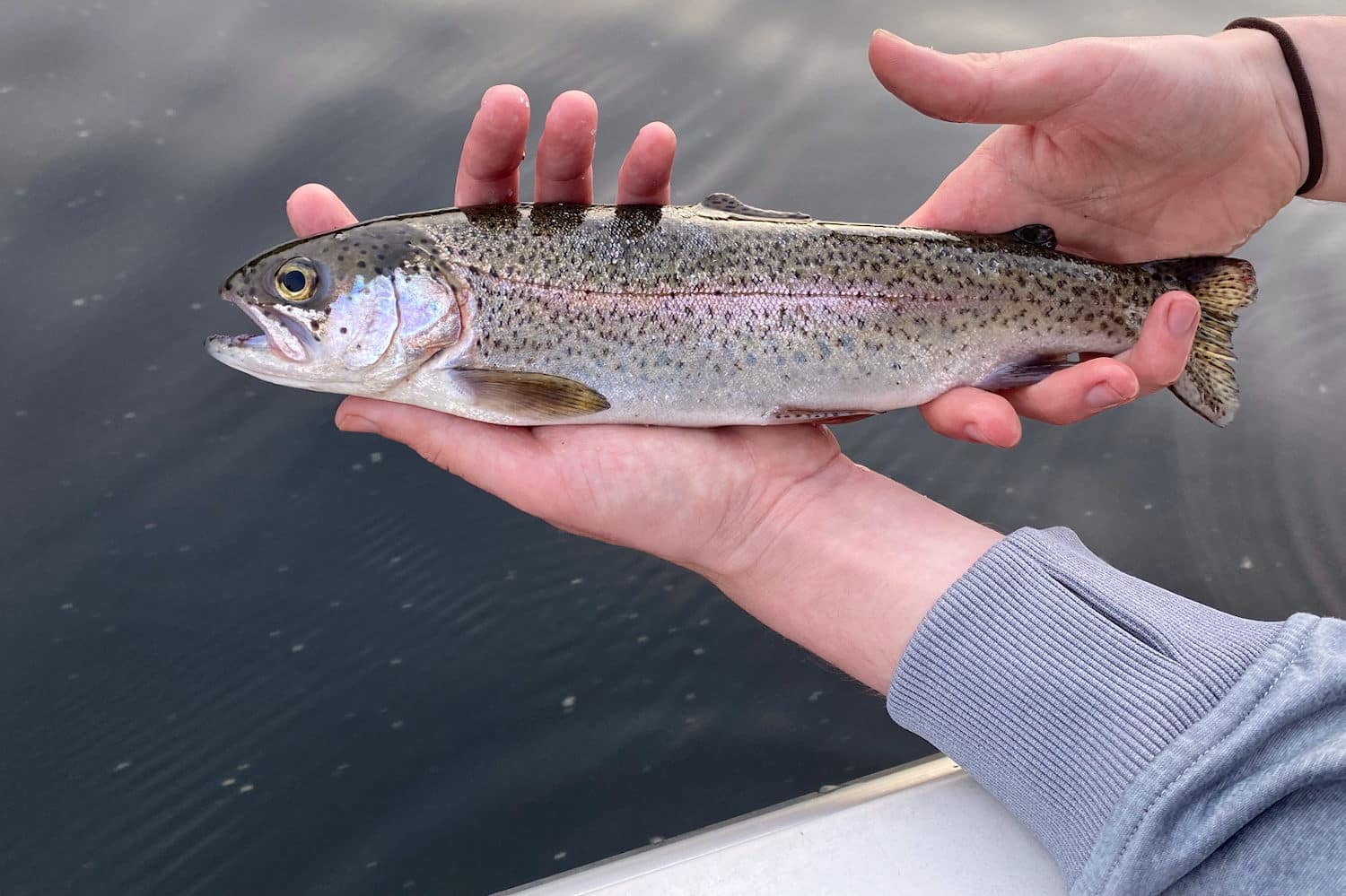Rainbow trout has a mild, delicate flavor with a slightly nutty undertone. The flesh is tender and flaky, while the taste is often described as being similar to salmon but milder and less oily. It can be cooked in various ways, such as grilling, baking, or pan-frying, and pairs well with a variety of flavors and seasonings.
Know More About what does rainbow trout taste like
Rainbow Trout: A Delight for the Palate
Introduction:
Rainbow trout, one of the most popular freshwater fish species, offers a delectable culinary experience to seafood enthusiasts around the world. Known for its vibrant colors and flavorful meat, this fish is a perfect choice for both professional chefs and home cooks. In this article, we delve into the unique taste profile of rainbow trout and explore what makes it a delightful addition to any gastronomic journey.
Appearance:
Before we explore the taste, it is worth mentioning rainbow trout’s striking appearance. As its name suggests, this fish showcases a mesmerizing array of vibrant colors. With its sleek silver skin, punctuated by spots across its back, ranging from silver to pink, and a signature red stripe running along its lateral line, rainbow trout is truly a sight to behold.
Texture:
The texture of rainbow trout is a key factor that contributes to its culinary appeal. Its meat is firm, yet tender, with a delicate flake that easily separates. It possesses a velvety-smooth mouthfeel that effortlessly glides across your palate, enhancing the overall dining experience. This standout texture makes it a versatile ingredient suitable for various cooking techniques.
Flavor:
Now, let’s dive into the most exciting aspect of rainbow trout: its distinct flavor. Often described as mild and delicate, rainbow trout offers a subtle and refined taste that appeals to fish connoisseurs and novices alike. It is less “fishy” compared to other species, making it accessible to those who might be wary of strong seafood flavors. The flavor profile of rainbow trout is often likened to a combination of salmon and trout, with its own unique twist.
Sweetness:
One of the defining qualities of rainbow trout is its inherent sweetness. This natural sweetness elevates its taste, adding a delightful dimension to every bite. The sweetness tantalizes the taste buds, balancing perfectly with its mild savory notes. The contrast makes rainbow trout an ideal choice for various culinary preparations, allowing it to harmonize with the flavors of accompanying ingredients.
Freshness and Cleanliness:
Rainbow trout, when sourced from pristine waters, exhibits unparalleled freshness and cleanliness. This quality ensures that the fish maintains its pure taste, free from any unpleasant flavors or odors. As a result, rainbow trout’s flavor shines through, providing an enjoyable and pure seafood experience that will leave you craving for more.
Versatility:
The delectable flavor and pleasing texture of rainbow trout allow it to adapt to a wide range of preparation methods. Whether grilled, baked, pan-fried, or even smoked, rainbow trout’s taste shines through, offering a delightful experience with every culinary endeavor. Its versatility makes it a sought-after ingredient for professional chefs and home cooks alike, as it pairs well with an array of herbs, spices, and sauces.
Final Thoughts:
Rainbow trout truly stands out as a stellar seafood option. Its mild yet distinct flavor, combined with its velvety texture and natural sweetness, make it an indispensable part of any seafood lover’s culinary repertoire. Delightfully versatile and visually appealing, this fish deserves a regular spot on your dining table. So, the next time you seek a luxurious seafood experience, consider rainbow trout—it will surely dazzle your taste buds.
FAQs on what does rainbow trout taste like
1. What does rainbow trout taste like?
Rainbow trout has a mild and delicate flavor profile, often described as slightly nutty and buttery.
2. Is rainbow trout a fishy-tasting fish?
No, rainbow trout is known for its mild taste and is not commonly associated with a strong fishy flavor.
3. How does rainbow trout compare to other fish in terms of taste?
Rainbow trout is often compared to salmon in terms of taste and texture, although it is milder and less oily than salmon.
4. Can rainbow trout have a slightly earthy or gamey taste?
In some cases, rainbow trout caught in certain environments may exhibit a slightly earthy or gamey flavor, especially if they have been feeding on particular types of food.
5. Is rainbow trout a good option for people who don’t typically enjoy fish?
Yes, rainbow trout’s mild flavor and lack of fishiness make it a popular choice for individuals who typically don’t enjoy the taste of fish.
6. What cooking methods enhance the taste of rainbow trout?
Rainbow trout can be prepared using various cooking methods, including grilling, broiling, baking, or pan-searing. These methods help preserve its delicate flavor and bring out its natural taste.
7. Are there any herbs or seasonings that complement the taste of rainbow trout?
Herbs like dill, thyme, lemon zest, and garlic are commonly used to enhance the flavor of rainbow trout. These ingredients complement its subtle taste without overpowering it.
8. Can rainbow trout be used in different recipes?
Absolutely! Rainbow trout is versatile and can be used in various recipes such as fish tacos, salads, pasta dishes, or simply served as a main course with accompanying sauces and sides.
9. Does the cooking method affect the taste of rainbow trout significantly?
Yes, the choice of cooking method can influence the taste of rainbow trout. Grilling or smoking can add a smoky flavor, while baking can bring out its natural sweetness.
10. Are there any specific regional cuisines where rainbow trout is commonly used?
Rainbow trout is widely utilized in cuisines across the world but is particularly popular in North America, where it is often served in restaurants and found in local fishing communities.




Leave a Reply